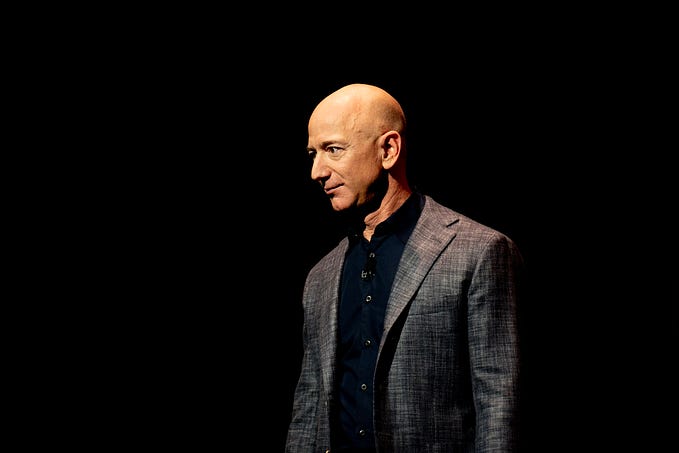Can service design empower students?

Service design has taken a more prominent role and found its way into the daily routine of industries. You will found over 2.04 million people on Linkedin with service design in their job title. It holds an important place in the future of the planet.
Service design has become a bit of a buzz word as organisations, innovation agencies, and individuals have been implementing it into their toolkit. However, it is crucial for us to ensure that the next generation understands how this can be used as a tool to find solutions for future challenges.
Perhaps I am turning into a grumpy-old-man, but there seem to be far too many buzzwords all describing very similar things these days. Take, for example, Service Design. — Paul Boag, Co-founder of Headscape
In the year 2020, young people and students have been most impacted the most by the Coronavirus pandemic.
- 1.3 billion children are out of school worldwide due to school closures linked to the coronavirus pandemic (Source: UNESCO)
- 50% of students worldwide don’t have computers at home (Source: UNESCO)
- 368.5 million children in 143 countries who normally rely on schools for daily meals must now look to other paid sources (Source: United Nations World Food Programme)
- Less than 41% of teens haven’t attended an online or virtual class since in-person school was cancelled (Source: Common Source Media)
In January of 2021, I gave a 90-minute presentation to a group of Master’s students on the intricacies of service design and its benefits to future employers, businesses, and communities. My audience also consisted of students from around the world thanks to the power of the internet and remote learning. I know each individual would see a different way of applying service design to their local environment.
Compared to running sessions with large corporate companies, social enterprises, or start-ups it would be easy to make service design more tangible by working on a specific challenge and involving the right stakeholders.
This post highlights the importance of empowering the next generation of change-makers, designers, and innovations and opening their minds to the idea of using service design to think differently.
Not quite service, Not quite design
Before I go on, I’d like to shed some light on the different nuances to how service design is applied across different industries, parts of the world, and designers with various backgrounds. If you speak to many service designers and ask them what the term means to them, don’t be surprised if you don’t receive the same answer in the form of a definition.
One of my favourite definitions is “Service design improves the experiences of both the user and employee by designing, aligning, and optimising an organisation’s operations to better support customer journeys” — Nielsen Norman Group.
It is important to understand the difference between service design and design thinking. A design mindset is lean by empathy for the user, divergent & convergent mindset and focuses on solving problems. Service design, on the other hand, focuses on put these principles into practice in a service-oriented approach while considering the activities of orchestrating people, infrastructure, communication, and material components of a service in order to create value.
- Human-centered: Consider the experience of all the people affected by the service.
- Collaborative: Stakeholders of various backgrounds and functions should be actively engaged in the service design process.
- Iterative: Service design is an exploratory, adaptive, and experimental approach, iterating toward implementation.
- Sequential: The service should be visualized and orchestrated as a sequence of interrelated actions.
- Reality: The service, ideas, and intangible values need to prototyped in physical or digital reality.
- Holistic: Services should sustainably address the needs of all stakeholders through the entire service process.
- Accessible: Design should be implemented with everyone in mind and made to fit into their lifestyle.
Service design goes beyond the concept of creating a solution purely for aesthetic purposes. Discover extinguishes it from design thinking and how something might look from an aesthetic perspective. In other words, organisations can often get confused with the difference between big and small design as a way to frame problems. Service designers are much more concerned with whether a service fulfills a need and creates value, than with the details of what it looks and sounds like.
Along the same lines, we can also focus on customer service. The discipline involves creating a good service that only considers the customer’s needs. Service design not only solves the customer’s problems but also creates value by looping in a wide group of stakeholders.
The future is led by the next generation
Any good service designer should closely study user requirements, service scope, service systems and processes, and the structure of the organisations that deliver them and user journeys.
I was surprised to be met with silence when I said, “Service design is for everyone” and can be adapted across experiences. Ask a service designer that works in finance and one from the government what they believe Service design holds for the future. You are likely to get numerous answers each time.
What does Service Design mean for the future?
A perfect answer to this question would fundamentally answer how the next generation service designers would use mindset, process, toolset, and cross-disciplines. It was important to share not just how this can be applied across different professionals for the future.
The Coronavirus pandemic, Brexit, and a potential economic recession have created a need for service design across governments, organisations, and communities, creating an impact that could potentially last for years.
Service design has created a lot of traction across the world as a practical approach to design that can impact how value can be created beyond design thinking. Many companies and consultancies have adopted service design as part of their process and portfolio with many departments and roles being created every day. This is further supported by platforms such as Service Design Jobs that specialise in service designs with over 1,800 jobs posted to date from 56 countries.
Service design stands out among other communities in being welcoming and wholesome. This is another factor that has increased the adoption of service design needs to build our tomorrow so that Service Design remains relevant, impactful and growing continuously in the right direction.
How can service design impact our future?
Service design is constantly evolving and designers are constantly learning.
To envision the future, we must understand how to empower the children that would shape the future. To make this empowerment a reality, we have to do more than educate students and empower them by giving them the opportunity to learn, experiment, and do service design. By inspiring our youth to explore the potential of service design to build the skills and capabilities needed for future challenges.
Working with students who are at the beginning of their career/development and inspiring them to think outside the box has always been a humbling experience for me. When I started teaching, I was not provided with the luxury of endless resources. We had nothing. There were no processes, no methods, no tools, and no definitions. We were tasked with the responsibility of applying design as a human-centered discipline to the immaterial product of services to unlock its true potential.
“You cannot change the front stage if you don’t impact the backstage”. — Birgit Mager, Service Design Network, President
Students also need to understand that the world is shifting from products to services/platforms. Amazon, Netflix, Spotify, and other future services have validated their business models from just an unmet need, a gap in the market, or an underdeveloped marker to providing life-altering services that manage to find their way into people’s daily routine. These companies focus on how ever-changing customer behaviour can impact their daily business.
In order to truly impact the future, we need strategic doers who can influence stakeholders to get involved into the nitty-gritty of the particular service. We need to look at our clients, customers, and communities as users and build professional relationships with them.







